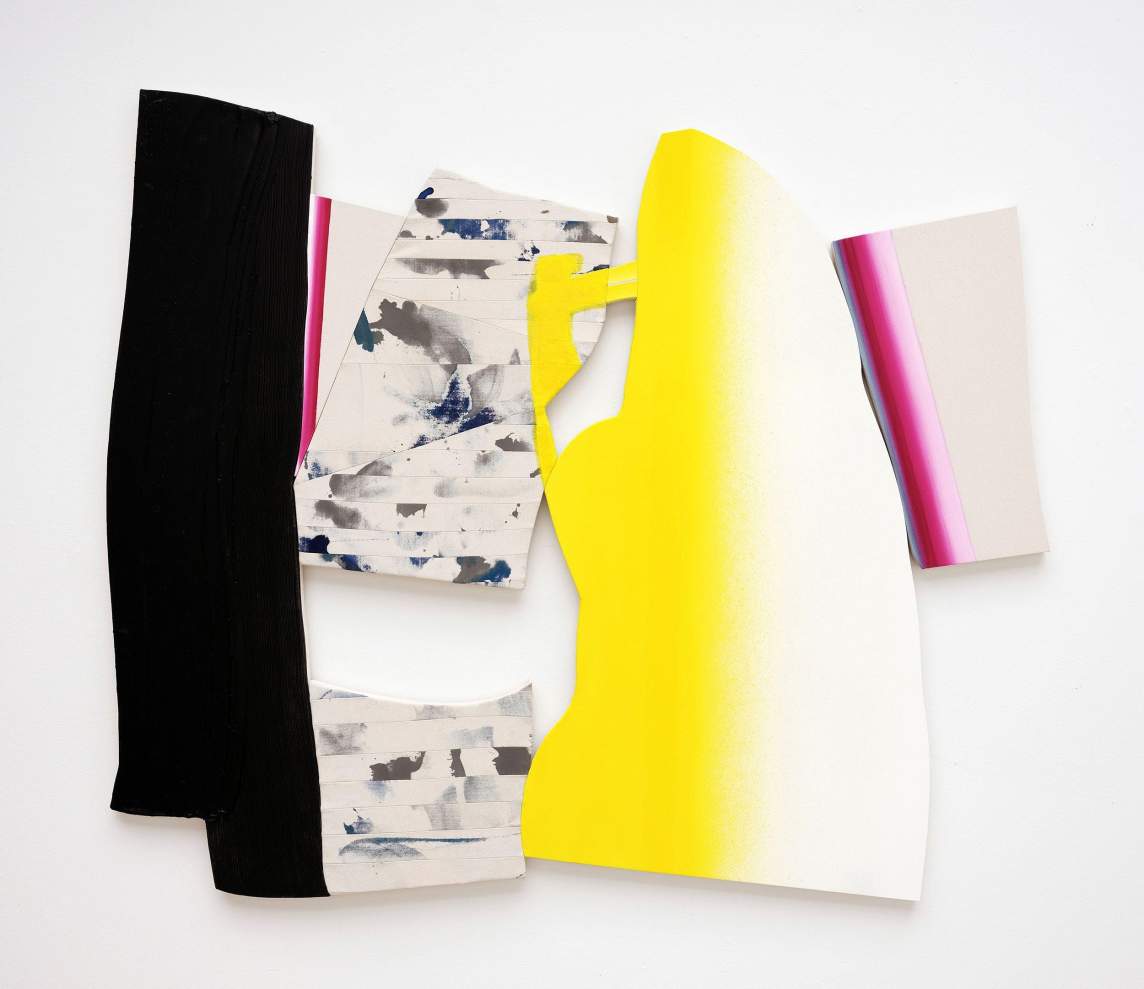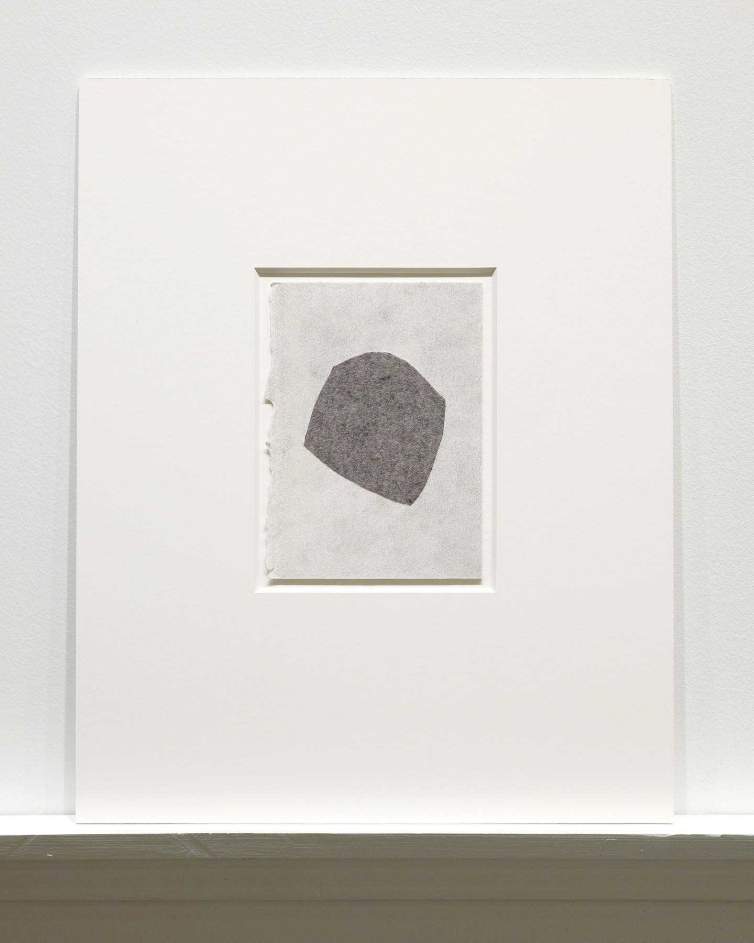In the Studio: E Marshall
"The actual physicality of making the line and then making a line next to it fee...

Leslie Smith III is an artist based in Madison, Wisconsin, and a 2022 Joan Mitchell Fellow. We interviewed him about his work and creative practice in April 2023. The following is an edited transcript of that conversation.
I consider my works to be paintings, even though my processes of late mirror a bit of sculpture, and fiber art. Ultimately, I'm still operating within an understanding and appreciation of how paintings function.
In the purest sense, I'm an oil painter. I really love oil paint, pigments, mediums, and their working principles. I’m infatuated with historical processes and their potential as solutions for contemporary pursuits. I think these historical painting traditions exhibit optical magic. I often enjoy uncoupling a historical oil painting process from its representational purpose, then using it to achieve something more perceptual and abstract.

I think a lot about my work as being part of a pursuit to expand notions of Black expression. I’d like to believe that most folks acknowledge that no individual identity or culture has a singular expressive modality or aesthetic. I consider my abstractions as celebrations of Blackness, acknowledging the complexities of Black identity as it relates to my own experience.
My paintings are residual artifacts of me as someone who is a collection of unique experiences. Recently, I've been focused on how we engage with each other in shared spaces as a result of our individuality. Transparency, compassion, and resentment, amongst other aspects of social constructs, are some of the recurring themes in my paintings. The resulting abstractions are in service of my goal to oppose dominant cultural narratives.

My relationship to process is steeped in problem solving. I draw on the history of painting and appropriate familiar painterly gestures and manipulate them, turning them into larger exaggerations or passages that sometimes mimic impressionistic spatial relationships. I enjoy working with finished parts in creating abstract forms. A good amount of time is dedicated to working on making materials that will be deconstructed and integrated into a matrix consisting of juxtaposing materials and forms.

The irregular shapes of my paintings allow me to work against the conventions of my approach to composition. Every modular element exists on the same level. Like a mosaic, nothing's overlapping. It's not exactly a collage, although it has a similar energy as a collage. What I hope is being witnessed is a kind of forced harmony. I think my shapes inhibit viewers' predetermined notions. I hope these works lead to a moment where you have to engage the object on its own terms without expectations.
I think of this approach as being connected to my use of geometry and composition. I’m trying to move further away from Western perspective. I’m in the midst of exploring relationships between the traditions of perspective and colonization. There’s something interesting about the way we see and how we choose to aestheticize the world around us.

In addition to my oil paintings, I also make drawings. My paintings have always been very separate from my works-on-paper, in that I don't typically make drawings that become schematics for a painting or study for a painting. They're their own thing. I always say that my drawings deal with what I'm processing right now, whereas my paintings deal with the ideas that I was processing through drawing three years ago. There's a delay and I’ve gotten used to it.

This relationship between drawing and painting has been shifting for me somewhat over the past few years. In the space of the Covid lockdown, I was working from home and I couldn’t get to my painting studio regularly. I was so hungry to make paintings. Instead, I was doing a lot of drawings. I started dealing with the issues that I wanted to be dealing with in the paintings. It was new to me to do this with graphite on paper.
Over the Spring of 2020, I created a series of works-on-paper that laid out my next steps for some paintings.

One painting that came out of that process is called Spring Kept Its Promise Once Again. It was one of the first pieces that I was able to sink my teeth into after the initial lockdown of the pandemic, and it was in my second solo show in Paris last year. It was liberating to have so many decisions made up front that I was able to focus more on how the individual parts of that whole painting reached their maximum potential.
For me, it's super important that each section of a painting is very finished and finite in its own individual way. If you get lost in that passage of paint or that passage of sewn material, it's got to be fulfilling in its own right. At times they become portals, like traditional painting windows, things that you peer into. And when you step back, you're forced to try to figure out how all these individual components come together and create this more macro experience.

I’ve recently begun integrating felt into the space of the painting. It's like I’m trying to develop aesthetic and structural solutions that bring everyone together in ways that offer unique visual experiences from one painting to the next.
As a result, felt has ventured into my works-on-paper. I’m trying to create a common space for the industrial felt. My focus as of now is on the way the felt fibers interlock and the relationship between them and how I typically apply graphite to a drawing surface. I’m trying to blur the lines between the two, if possible.

I work on many projects at the same time in the studio because I work in oils and the processes take time. I've got tables laid out with things that are glazed, surfaces that are drying, I'm just building up an inventory of color that I can cut from. There's things that I'm sewing and stretching right now that are being put together. It's all over the place.
Right now, I’m working on large-scale paintings for my first solo exhibition in New York City. It’s called Reaching For Something High and it will open in September at Chart Gallery. I'm excited about it.

I'm also working on a site-responsive work for L’Art dans les Chapelles, which facilitates an annual event of artworks responding to chapels in small communities in Brittany, France, not far outside of Pontivy. They invited 15 artists to participate. They gave us a year to create a work for a 14th or 15th century chapel. They're beautiful, and all in different levels of conservation. The chapel I’m making work for is Chapelle Saint-Tugdual, in Quistinic. It's a unique space. There's no electricity, there's just windows and the chapel is nested within this lush green space full of trees.

My Installation is titled The Passage. Fourteen paintings inhabit the space as individual stations that exhibit a transition from cobalt to crimson. Each painting is actually two paintings, one niched inside of another painting. They're about 20 by 26 inches. It's a play off of the stations of the cross, in that they take the form of 14 identically shaped canvases, with similar applications of paint. They all incorporate this deep, lush green that I've been exploring lately. It's a much more process-driven project than what I'm accustomed to. It differs in that I've put a lot of the creative currency into the making of the materials. Then I’m making selections out of sections of painted canvas and cutting away from those materials to create the paintings.


This approach has slowed the painting process down, making it less immediate. At the moment more aspects of the process are more considered, but not in the sense that I'm sitting in a chair thinking about what the next stroke is going to be. I’m working more like an upholsterer, where painted canvas is treated like a hide and I am going to make my selections out of it. The project opens to the public on July 7th.
Interview and editing by Jenny Gill. Learn more about Leslie Smith III’s work here.